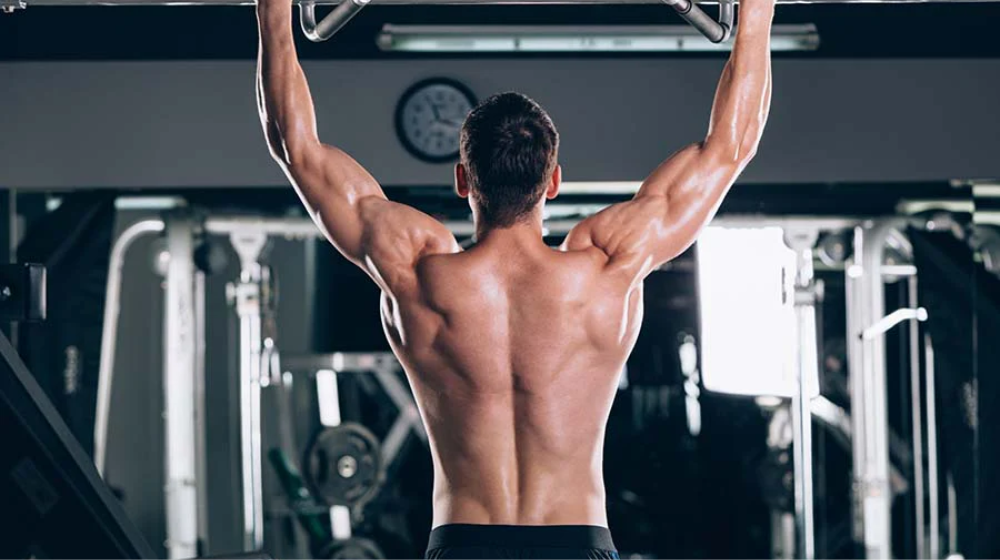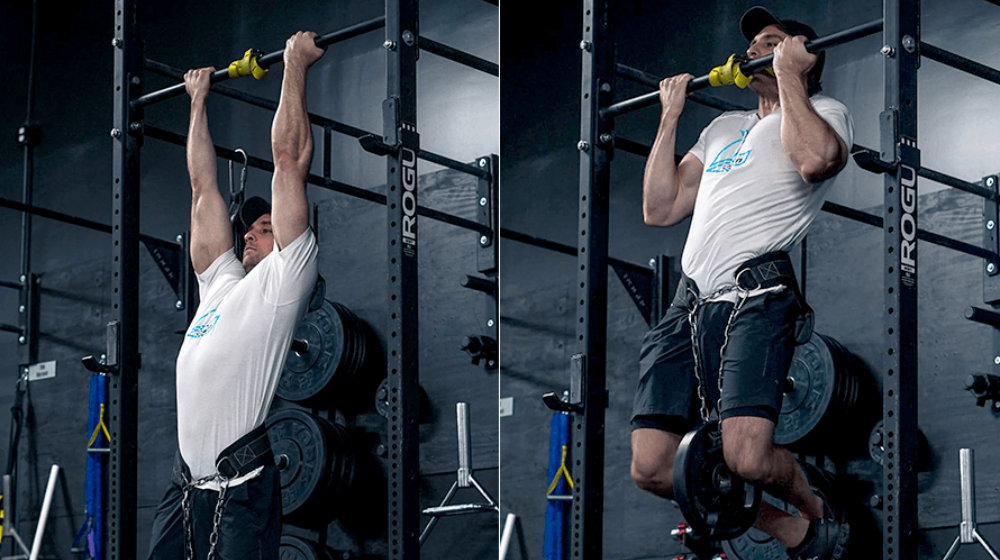How to Do Chin-Ups: Step-by-Step Guide for Beginners
How to Do the Chin-Up for Bigger Arms and a Stronger Back
Chin-ups are one of the most effective bodyweight exercises for building strength in your arms and back. Not only do they sculpt your physique, but they also enhance functional strength that translates into everyday activities. In this article, we’ll cover how to properly execute a chin-up, for bigger arms and strong back common mistakes to avoid, its benefits, the muscles it targets, who should incorporate it into their routine, how to program your workouts, variations, alternatives, and some frequently asked questions.
How to Do the Chin-Up for Bigger Arms and Strong Back
Performing a chin-up correctly is crucial for maximizing its benefits and minimizing injury risk. Follow these steps:
- Grip the Bar
Use an underhand grip (palms facing you) and place your hands shoulder-width apart on the bar.

- Hang Freely
Start from a dead hang, with your arms fully extended and shoulders relaxed.

- Engage Your Core
Tighten your core to stabilize your body.

- Pull Up
Drive your elbows down and back as you pull your chin above the bar. Focus on squeezing your shoulder blades together.

- Lower Slowly
Descend back to the starting position in a controlled manner. Avoid dropping down quickly to maximize muscle engagement.

Chin-Up Mistakes to Avoid
- Using Momentum: Swinging your body to gain height reduces effectiveness. Focus on controlled movements.
- Incorrect Grip Width: A grip that’s too wide or too narrow can strain your shoulders. Stick to shoulder-width for optimal results.
- Not Engaging the Core: A weak core can lead to poor form and potential injury. Always tighten your core throughout the movement.
- Neglecting Full Range of Motion: Failing to fully extend your arms or pull your chin over the bar limits muscle activation. Aim for full range every time.
Benefits of the Chin-Up
Chin-ups offer a myriad of benefits, including:
- Strength Building: They effectively build upper body strength, focusing on the biceps, back, and shoulders.
- Muscle Hypertrophy: Regular chin-ups promote muscle growth, leading to bigger arms and a well-defined back.
- Core Stability: Engaging your core improves overall stability and strength, benefiting other exercises and daily movements.
- Improved Grip Strength: The grip required for chin-ups enhances hand and forearm strength, important for many sports and activities.
Muscles Worked by the Chin-Up
Chin-ups are a compound exercise that targets multiple muscle groups, including:

- Biceps Brachii: The primary mover, crucial for elbow flexion.
- Latissimus Dorsi: The broad muscle of the back, providing width and strength.
- Rhomboids: Important for scapular retraction, contributing to a strong posture.
- Trapezius: Supports shoulder stability and upper back strength.
- Pectoralis Major: While secondary, it aids in pulling movements.
- Core Muscles: Engaged throughout for stability.
Who Should Do the Chin-Up
Chin-ups are suitable for a wide range of fitness levels, from beginners to advanced athletes. However, they are especially beneficial for:
- Bodybuilders: To enhance upper body aesthetics and strength.
- Athletes: For functional strength and performance improvement.
- Fitness Enthusiasts: Anyone looking to improve their overall fitness and core strength.
Important Note: If you’re new to exercise or have existing shoulder issues, consult a fitness professional before attempting chin-ups.
How to Program the Chin-Up
To effectively incorporate chin-ups into your workout routine, consider the following guidelines:
- Frequency: Aim for 2-3 times per week, allowing for adequate recovery.
- Sets and Reps: Start with 3 sets of 5-10 reps, adjusting as you gain strength.
- Progression: If you can perform more than 10 reps easily, increase the difficulty by adding weight or trying variations.
Chin-Up Variations
Once you master the standard chin-up, consider these variations to keep your workouts fresh and challenging:
Weighted Chin-Up:
Attach a weight belt or hold a dumbbell between your feet for added resistance.

Close-Grip Chin-Up:
Bring your hands closer together to increase bicep engagement.

Negative Chin-Up:
Jump or step up to the bar and slowly lower yourself down to build strength.

Commando Chin-Up:
Alternate sides as you pull up, engaging different muscle fibers.

Chin-Up Alternatives
If you’re unable to perform chin-ups yet or need variety, try these alternatives:
- Lat Pulldowns: Mimics the movement of chin-ups using a machine.
- Assisted Chin-Ups: Use resistance bands or a machine to help lift your body weight.
- Pull-Ups: A similar movement that targets slightly different muscle groups.
- Inverted Rows: A horizontal pulling exercise that builds strength in similar muscle groups.
Frequently Asked Questions
How many chin-ups can I do?
It varies by individual. Beginners may start with 1-3 reps, while advanced lifters might perform 10-20 or more.
Can chin-ups help with back pain?
Chin-ups strengthen back muscles, potentially alleviating discomfort. However, consult a healthcare professional if you have existing back issues.
How can I improve my chin-up strength?
Incorporate negative chin-ups, assisted variations, and strengthen your core and grip through targeted exercises.
Are chin-ups bad for my shoulders?
When performed with proper form, chin-ups are safe for your shoulders. Always listen to your body and avoid pain.
Conclusion
Chin-ups are a powerhouse exercise for developing bigger arms and a stronger back. By mastering the technique, avoiding common mistakes, and incorporating variations and alternatives, you can effectively program chin-ups into your fitness regimen. Whether you’re a beginner or a seasoned athlete, chin-ups can elevate your strength and physique to new heights. Start incorporating them into your workouts today, and watch your upper body transform!
